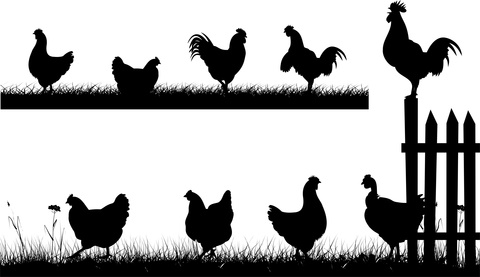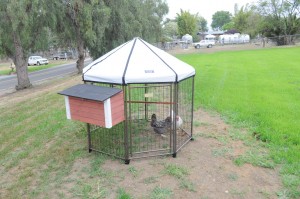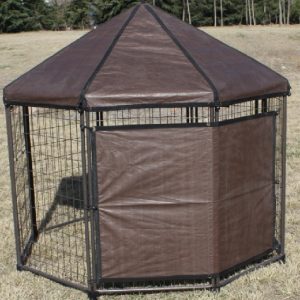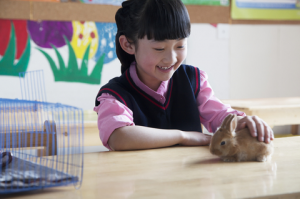A New, More Humane, Industry Chicken Coop Standard
When shopping for a chicken hutch you’ve probably seen plenty of coops that promise housing for 6, 8 or even a dozen chickens. Then, once you get home and assemble the new coop you find that not only is it too small for 8, but in fact, it doesn’t even have enough room for the three chickens you already have to live comfortably! Now, you’re likely disappointed in the seemingly false advertising and overestimation of chicken capacities. We want to change that.
Chicken coops are only as strong as the weakest link within the design. For example, if the nesting box is 12” x 12” x 12” (Which accommodates one to three birds maximum) and the manufacturer of the coop has enough run space for 8 chickens but only that one nesting box, it can’t house eight chickens. Actually, it can only house about two to three.
We noticed that this discrepancy is consistent throughout the chicken coop industry. This is because the chicken coop standard was invented and then copied by other manufacturers in the business. Advantek was one of those manufacturers. Now, the time has come for us to focus on designing humane chicken coops for our backyard chickens. Because of this new initiative, we have updated the correct quantity of chickens are that can reside inside any given coop.
From now on, all of our chicken coop capacities have considered the following:
- 2-3 square feet per chicken for roosting and space. 1 square foot on the roosting bar
- 12” x 12” x 12” for a nesting box per 1-3 chickens max
- 3-6 square feet of running space
Multiple reports have stated that, unsurprisingly, chickens living in humane situations are healthier, live longer, and produce more eggs. Chickens stress very easily (this can’t be emphasized enough) and when stressed, egg production may cease and chickens could become ill.
Going forward, we will be featuring the humane chicken coop standard capacities vs. industry standards on our packaging. You may also notice that our chicken capacity counts have already changed across all of your favorite e-commerce retailer’s websites. Our goal here at Advantek is to safely shelter all animals in sustainable and healthy environments; to see each and every animal within a happy home.
Chickens are great pets and they contribute so much more than fresh eggs to the household. Keeping them healthy and giving them enough space to thrive creates benefits for the chicken and the chicken parent that are priceless.
That is the story. One simple observation that led to the questions. Those questions led to answers that lead to something great. Just wait until you see the results.
Explanation of Research Process by Dave Bloom, Chief Researcher of this project
When I was hired by Advantek in late 2015, I knew at the onset that my responsibilities would include writing about chickens. This is a company that focuses on pet products so this was by no means a shock to me. But at the time, pretty much the only things I knew about chickens were a few jokes, recipes and the fact that they poop–like a lot.
I wanted to learn everything I could about chickens, especially how to care for them and try to understand what a backyard chicken goes through on any given day. We design chicken coops and I needed to know how the coops are created to cater to chickens; not only what was the chicken coop standard, but what were the other practices in place to care for chickens? I did some research online, more or less in passing; reading people’s thoughts on their blogs and other somewhat unreliable information. I would do an internet search every few days to get my feet wet with information and I started to feel confident in my introduction to the world of chickening. With so much untrustworthy content online I needed confident sources that I could cite and utilize going forward. I did some exploring about chickening books and started my education with these three books; Chickens For The Backyard Homesteader by Suzie Baldwin, Raising Chickens For Dummies by Kimberly Willis and Robert T. Ludlow and The Backyard Chicken Bible by Eric Lofgren. I then followed it up with these two magazines that had special issue dedicated to chickens; Amundsen, Lucie B. “How To Raise Chickens.” Modern Farmer. Spring 2016 and Williams, Christian. (Ed.). (2016). Guide to Backyard Chickens: [Special issue]. Grit. The information in the magazines echoed everything I had read in the books and my confidence continued to grow.
After all of that reading I ended up with a new question for every question answered.
Looking at the products that exist out there I noticed that there was a clear industry standard for chicken coops that benefits the chicken owner, but not best constructed for birds, and in some cases are downright bad and unhealthy for them. We want to make products that benefit both. The biggest takeaway from some of these authors is that they themselves are backyard chicken owners, not reporters or writers assigned a story. Most of the chickeners that wrote these books went the Do It Yourself approach to build their coops. This of course, is always an option for you if you decide, but the core of building your own or purchasing a Humane Chicken Coop remain the same. We want chickens to live in environments that cater to their health and well being. The ideals put forth in our humane chicken coops educate on proper space for chickens in coops, correct size of a roosting bar, adequate run space and how exactly a nesting box should be sized for your chickens.
There will soon be a lot of new humane content on our website. Visit often as we’ll add information on Proper Practices, DIY Ideas and of course, The Humane Chicken Coop Standard. Are you as excited as we are?









